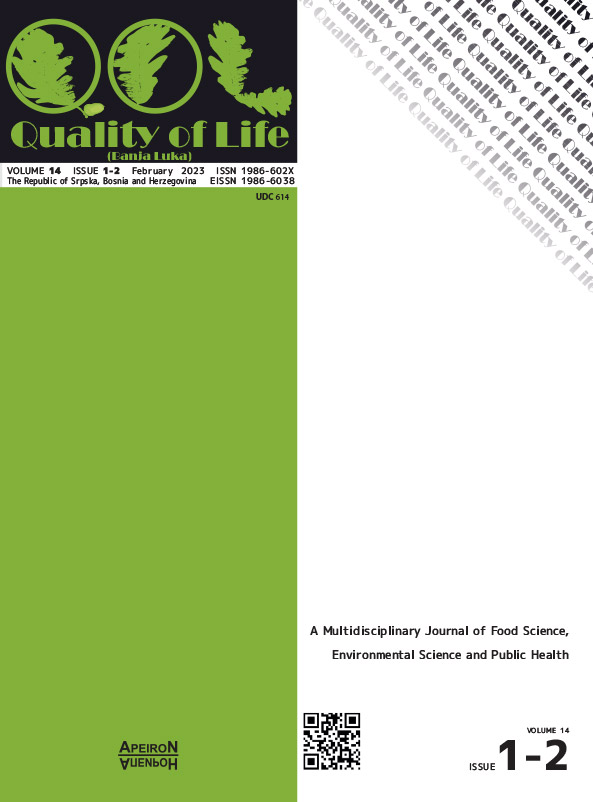Incidence of Febrile Neutropenia in Breast Cancer Patients Treated With Chemotheraphy Protocols From 01.01.2020 to 31.12.2021 in University Clinical Center of Republic of Srpska Banja Luka
DOI:
https://doi.org/10.7251/QOL2301038CAbstract
Febrile neutropenia occurring during chemotherapy was reported to be a predictor of survival in breast cancer patients. We assessed the incidence of febrile neutropenia induced by chemotherapy. Data from a retrospective study on the application of chemotherapy protocols in breast cancer patients was reviewed. Analyzing the data, we can see that out of 81 patients who received chemotherapy, 43 were diagnosed with neutropenia and 4 or 9.3% of those patients were diagnosed with neutropenia again despite prophylaxis with Granulocyte-colony stimulating factor (G-CSF). In 4 or 9.3% of patients, further administration of that chemotherapy protocol had to be stopped due to severity of neutropenia and complications they caused. During the treatment, grade IV neutropenia was diagnosed in 27 or 63% of patients while grade I neutropenia was diagnosed in 2 or 4.65% of patients. Anemia associated with neutropenia was also diagnosed in 7 or 16.3% of patients while pancytopenia was diagnosed in 4 or 9.3% of patients, and thrombocytopenia associated with neutropenia was diagnosed in only one patient. The hazard ratio of febrile neutropenia presence compared to the absence of such toxicity was adjusted. The cox model was 0.75 (confidence interval 95% 0.54-0.95; P=0,0189) for grade I neutropenia, 0.63 (0.50-0.78; P<0,0001) for grade II neutropenia and 0.71 (0.51-0.98; P=0.3888) for grades III and IV neutropenia. These results suggest that the occurrence of neutropenia during chemotherapy is an independent predictor of increased survival in breast cancer patients, while the absence of such toxicity indicates that the drug doses are not sufficient. Monitoring of febrile neutropenia in patients treated with chemotherapy may contribute to improved drug efficacy and better survival rate.
